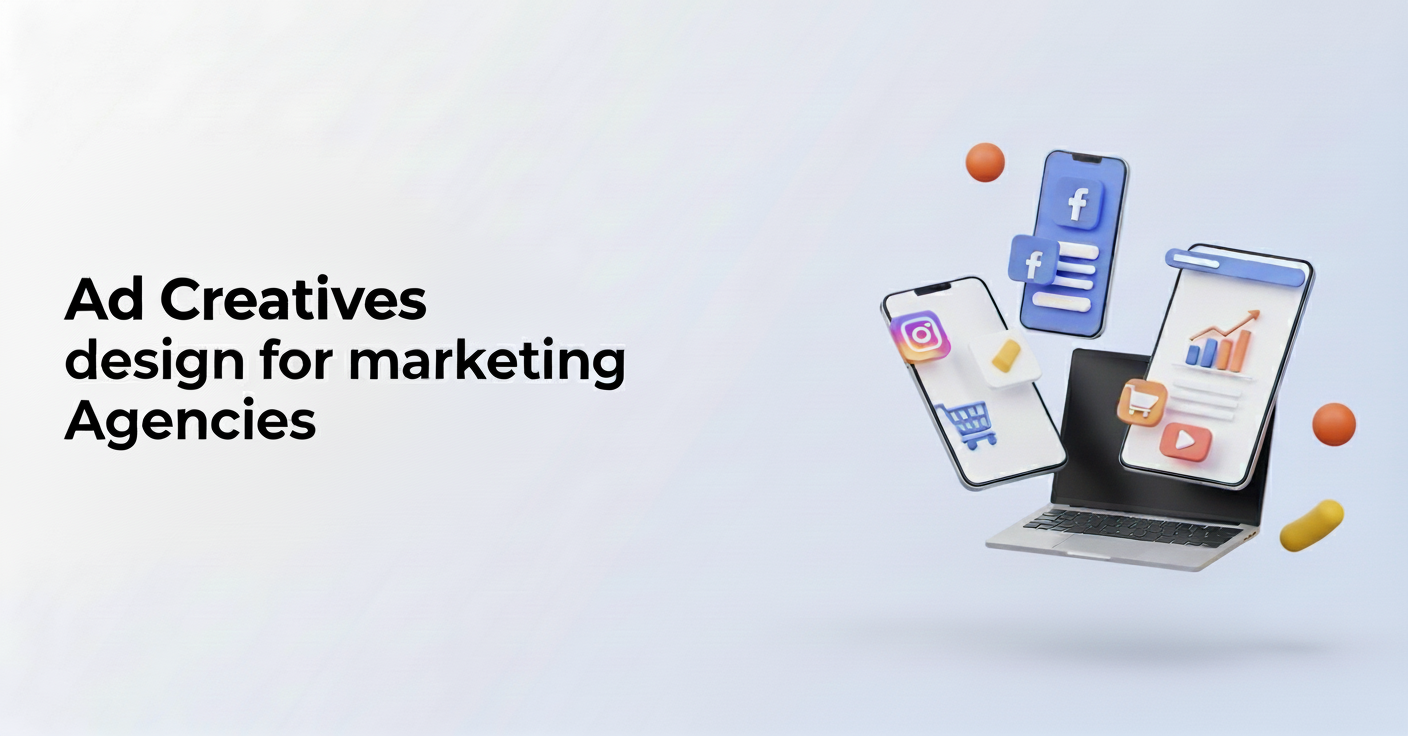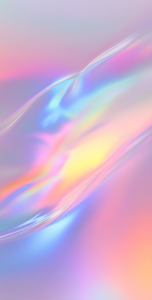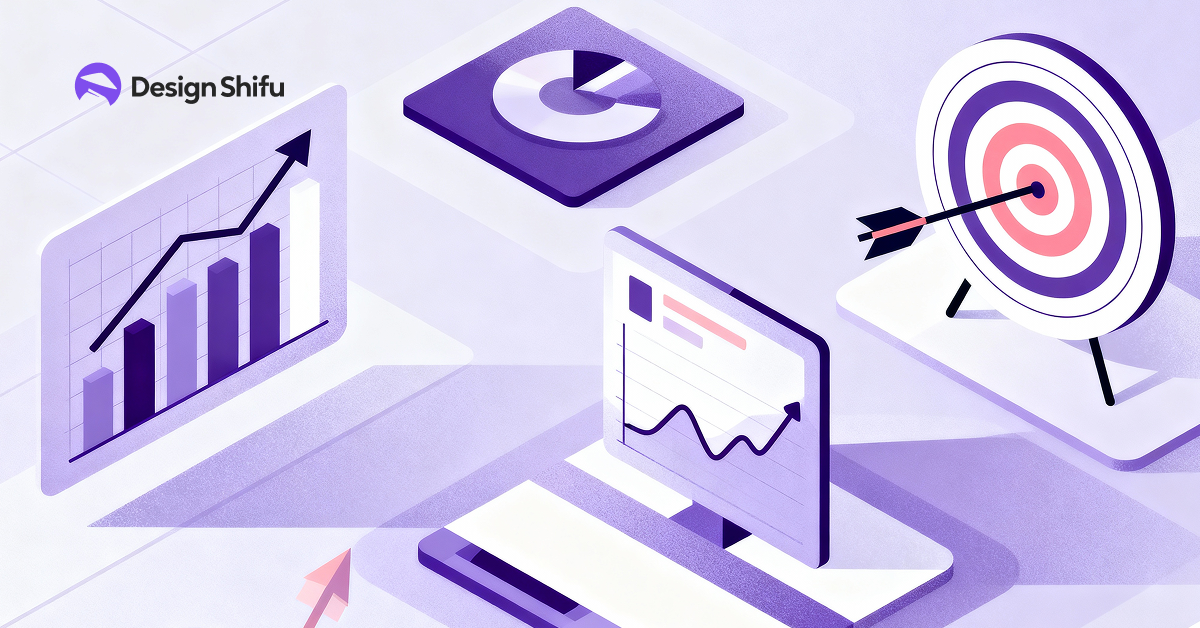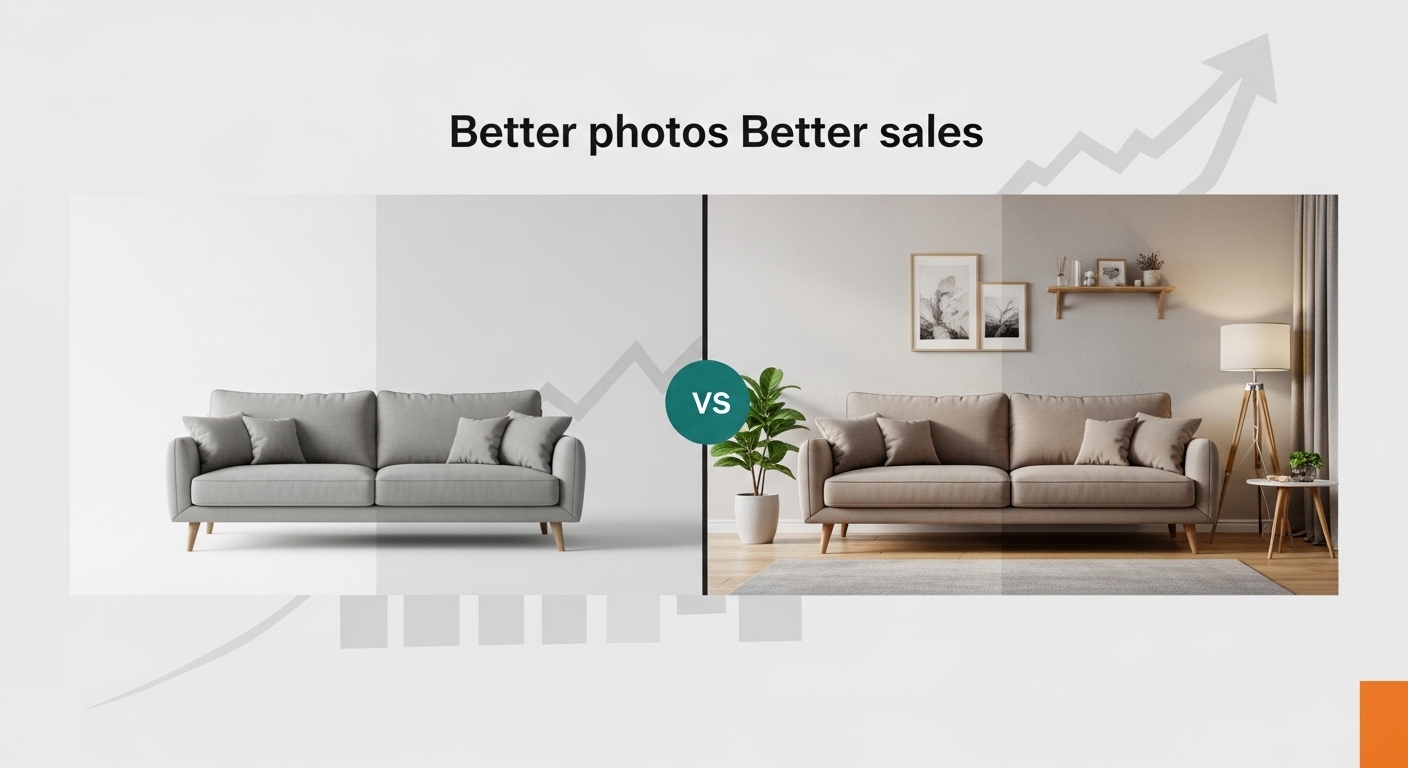You know that feeling when a client sends you a “simple” banner request at 4 PM on a Friday?
Because banner design, the thing that sounds so straightforward, so easy, so “it’s just a rectangle with some text”, is actually where a lot of agency relationships either flourish or completely fall apart.
I learned this the hard way. My third week at an agency, fresh out of college, full of confidence and Dribbble inspiration. The client wanted banners for their summer sale. “No problem,” I thought. “I’ve got this.”
Spent two days crafting what I genuinely believed was banner perfection. Clean typography. Beautiful product photography. A color palette that would make a Swiss designer weep with joy.
The creative director took one look and asked: “Did you check the file size? Does this work at 160×600? What’s the call-to-action?”
I hadn’t. It didn’t. And honestly, I’m not sure I even included one.
That was my first real lesson: banner design isn’t graphic design. It’s strategic communication wrapped in pixels and constrained by reality.
Why This Stuff Matters More Than You Think
Here’s what nobody tells you when you’re starting out at an agency.
Those banners you’re designing? They’re not just pretty rectangles floating in the digital void. They often the first – sometimes the only – impression someone gets of your client’s brand. They’re competing with cat videos, breaking news, and whatever drama is unfolding on social media.
And your client is paying for every single impression.
So when you design a banner that doesn’t perform, that’s not just a creative miss. It’s their money not working. May be It’s their boss asking why the campaign flopped. It’s you potentially losing an account.
No pressure though, right?
But here’s the thing, Once you understand what’s actually at stake, banner design becomes kind of fascinating. You’re essentially trying to stop someone mid-scroll, communicate a message instantly, and convince them to take action. All in less space than a Post-it note.
It’s like creative problem-solving in hard mode.
The Brief That Makes You Want to Cry
Let me paint you a picture. Maybe you’ve lived this exact scenario.
Client email arrives: “We need banners for our new campaign. All standard sizes. Include the product, our new tagline, the logo (full version, not the icon), a 20% off message, the promo code, ‘free shipping over $50,’ our website URL, and can we also mention the sustainability angle? Oh, and our CEO really loves purple. Due Wednesday.”
You read it. Read it again. Feel your soul leave your body.
Because what they’re actually asking for is physically impossible. You cannot fit all of that into a 300×250 banner and have it be remotely effective. But you also can’t tell a client “no” without offering solutions.
This is the real skill of agency banner design. Not making things pretty. Not following trends. It’s managing client expectations while still delivering something that actually works.
What I usually do in these situations (and feel free to steal this):
I’ll create two versions. One that includes everything they asked for – just to show them what that actually looks like. It’s cluttered, hard to read, and honestly kind of ugly. Then I’ll create what I actually recommend: a simplified version that focuses on one clear message.
I present both. “Here’s what you asked for. And here’s what I think will actually perform better. The difference is that one tries to say everything, and the other says one thing clearly enough that people actually see it.”
Nine times out of ten? They choose the simpler version. Sometimes they just need to see the cluttered version to understand why less is more.
The Sizes That Haunt Your Dreams
Can we talk about banner sizes for a second?
Because this is where it gets really fun. (And by fun, I mean you’ll be dreaming about pixels.)
The IAB standard ad sizes are: 728×90 (leaderboard), 300×250 (medium rectangle), 336×280 (large rectangle), 300×600 (half page), 320×50 (mobile banner), 160×600 (wide skyscraper) and honestly, there are more, but I’m getting stressed just listing them.
Each one requires its own approach. You can’t just shrink your 728×90 down to 320×50 and call it a day. Trust me, I’ve tried. It looks terrible.
- The leaderboard (728×90) is horizontal and shallow. Perfect for headlines that read left to right, but product images need to be wider. It sits at the top of pages, so it gets good visibility but also gets ignored fast if it’s not interesting.
- The medium rectangle (300×250) is like the workhorse of banner ads. It’s square-ish, fits in lots of places, and gives you just enough space to actually compose something. This is usually where I start designing because if you can make it work here, you can adapt it elsewhere.
- The skyscraper (160×600) is tall and narrow. It’s weird to design for because nothing in the real world is shaped like that. But it forces you to think vertically stack your elements, creating a visual flow from top to bottom.
- Mobile banners (320×50) look, they’re tiny. So tiny. Your message needs to be incredibly simple. Logo, five words maximum, and a button. That’s it. That’s all you get.
I remember designing my first set of campaign banners and treating each size like a completely separate project. Took me days. Eventually, I learned to think in terms of a design system: one core concept that adapts to different dimensions rather than six different designs.
Game changer.
What Actually Makes Someone Click
Most banners don’t get clicked. The average CTR for display ads is… not great. We’re talking less than 1% in most industries. Which means for every 1,000 people who see your beautiful creation, maybe 10 actually click it.
Sobering, right?
But here’s the thing: the banners that do get clicked have something in common. They’re not necessarily the prettiest or the most creative. They’re the ones that make someone feel something in that split second before they scroll past.
- Curiosity: “Wait, what is that?”
Relevance: “Oh, that’s exactly what I need.”
Urgency: “I should probably check that out before it’s gone.”
Humor: “Ha, that’s actually funny.”
I had a client in the insurance space (I know, not the sexiest industry). We’d been doing these very professional, very corporate banners. Blue and white. Stock photos of happy families. Safe. Boring. CTR was abysmal.
One day, frustrated, I tried something different. Instead of “Protect Your Family’s Future” we went with “What if your car gets hit by a meteor?” With a simple illustration of a cartoon meteor. It was slightly ridiculous. The client was nervous.
It outperformed everything else we’d done by 300%.
Not because it was an objectively better design. Because it made people stop for a second. It was unexpected in a space where everything is expected.
The lesson: Perfect design doesn’t always equal effective design. Sometimes weird works. At times simple works. Sometimes breaking the rules works.
You just have to test it.
The same visual psychology that drives landing page conversions also applies to banners, learn more in our breakdown of how visuals drive conversions.
The Copy Nobody Reads (But Everyone Processes)
Here’s a secret about banner copy that took me way too long to learn.
Nobody actually reads it. Not really. They process it. There’s a difference.
Choosing fonts that are clear and legible at small sizes is critical, just like in book layouts where typography improves readability (see our guide on fonts that improve readability).
Think about the last banner ad you remember seeing. You probably can’t recall the exact words, but you got the gist, right? “Sale.” “New.” “Free shipping.” Whatever it was, your brain grabbed the key information in about 0.3 seconds.
That’s all the time you have.
Crafting Banner Copy That Gets Noticed
So banner copy needs to work at a glance. Which means:
- Big words matter more than small words. Your headline is everything. It needs to be scannable, clear, and ideally trigger some emotion. “Save 50%” is better than “Enjoy Substantial Savings on Select Items.” One is instant. The other requires processing.
- Clever is risky. I love wordplay as much as the next copywriter. But in a banner? You don’t have time for people to get your pun. Be clever if you can be clever AND clear. Otherwise, just be clear.
- Questions work. “Tired of bad coffee?” is more engaging than “Buy our coffee.” Questions create a tiny moment of self-reflection. If the answer is yes, they’re more likely to click.
- Numbers are magic. “3 ways to” “50% off ” “24-hour sale” Numbers stand out visually and communicate specificity. Our brains like specificity.
The hardest part? You usually have about 5-7 words to work with. Maybe 10 if you’re lucky. Every single word needs to earn its spot.
I like to write out the message I’d actually say to someone if I were recommending the product in person. Then I ruthlessly cut it down until it fits. The essence of what I’d say, not the whole speech.
Animation: The Double-Edged Sword
Okay, controversial opinion time.
Animated banners can be incredible. They can also be the most annoying thing on the internet. There’s no middle ground.
The difference comes down to intention and execution.
Good animation:
- Has a purpose (reveals information, demonstrates a product, creates anticipation)
- Loops subtly or has a clear ending
- Doesn’t distract from the message
- Respects the viewer’s attention
Bad animation:
- Flashes rapidly because the designer thinks that gets attention (it does, but in a bad way)
- Includes too many moving parts
- Keeps looping aggressively
- Makes you feel like you’re being yelled at
I usually follow a simple rule: animate one thing at a time. Maybe your headline fades in. Then your product image. Then your CTA button pulses once. Simple, sequential, purposeful.
And timing matters SO much. Too fast and people can’t process what they’re seeing. Too slow and you lose their attention before the payoff.
My sweet spot is usually 2-3 seconds total. Long enough to communicate but short enough to catch someone mid-scroll.
This is important, your first frame needs to work as a static image. Some platforms don’t support animation. Some users have animations disabled. If your banner only makes sense in motion, you’ve lost a chunk of your audience before you even started.
Pro tip: For HTML5 banners, Google Web Designer is free and purpose-built for the task.
The Technical Stuff That’ll Bite You
Let’s talk about the boring-but-actually-critical part: technical specs.
Because you can design the most beautiful banner in the world, but if it’s 2MB and the platform has a 150KB limit, it’s not going to run. And that’s on you.
File size is non-negotiable. Every platform has limits. Google Display Network is usually around 150KB for HTML5 ads. Some platforms are even stricter. You need to design with this constraint in mind from the start, not as an afterthought.
Which means:
- Optimize your images ruthlessly (TinyPNG is your friend)
- Use web-safe fonts or make sure custom fonts are light
- Keep your code clean if you’re doing HTML5
- Test your file size throughout the design process, not just at the end
- Dimensions matter. Obviously. But also… make sure you’re designing at actual size. I’ve seen designers create banners at a larger size and scale them down. Don’t. Design at the exact pixel dimensions. What looks good at 1000px wide might be illegible at 320px.
- Safe zones exist for a reason. Some platforms add close buttons or platform UI elements over your banner. If you put your logo or CTA in the corner, it might get covered. Build in a buffer.
- RGB vs CMYK: This shouldn’t matter for digital, but I’m mentioning it because I once watched a junior designer waste hours trying to figure out why their colors looked wrong. They’re designed in CMYK. For the web. Don’t be that person.
When Clients Have “Feedback”
You send the banners. You’re proud of them. They’re strategic, they’re clean, they solve the brief.
Client response: “Can we make the logo bigger? And add more text? And my boss thinks we should use a different color. Also, can the product be bigger? And can we fit in that sustainability message we talked about?”
This is normal. It’s part of the job. This is not a personal attack on your creative abilities.
Here’s how I handle feedback:
First, I figure out what they’re really saying. “Make the logo bigger” usually means “I’m worried people won’t know this is us.” That’s a legitimate concern. Maybe the logo doesn’t need to be bigger, but maybe it needs better placement or contrast.
“Add more text” often means “I don’t think this communicates enough.” Okay, fair. But instead of adding more text, maybe we need to make the existing text clearer or stronger.
I respond with options, not resistance. “I hear you about the logo. Here are three ways we could make the brand more prominent without sacrificing the overall composition…”
Sometimes you make the changes they want or you push back with data or best practices. Sometimes you meet in the middle.
The key is making them feel heard while also advocating for what actually works. You’re not just a designer. You’re a consultant. Act like it.
Testing: The Part Everyone Skips
Want to know the real secret to great banner design?
Test everything.
I know, I know. Testing is boring. It takes time. It requires setting up tracking and waiting for data and analyzing results. There’s no immediate creative gratification.
But it’s literally the only way to know what actually works.
And I don’t mean “run two campaigns and see which one feels better.” I mean structured A/B testing where you change one variable at a time.
- Test headlines. “Save 50%” vs. “Half off everything” – which performs better? You might be surprised.
- Test imagery. Product shot vs. lifestyle image vs. illustration. They’ll perform differently for different audiences.
- Test CTAs. “Shop Now” vs. “Learn More” vs. “Get Started” – tiny wording changes can impact CTR significantly.
- Test colors. This one’s tricky because you’re usually locked into brand colors, but if you have flexibility, test it. A red CTA button might outperform a blue one, or vice versa.
The beauty of digital advertising is that you can test quickly and cheaply. Run variations simultaneously, let them accumulate data for a week or two, then analyze.
Build a swipe file of what works for different clients and industries. Over time, you’ll develop instincts based on actual data rather than assumptions.
Mobile Changes Everything
I probably should have mentioned this earlier, but honestly, it deserves its own section. Most people will see your banners on mobile. Not some people. Not a significant portion. MOST people.
And mobile banner design is fundamentally different from desktop. The screens are smaller, obviously. But it’s more than that.
People use their phones differently. They’re often doing something else – walking, waiting, half-watching TV. Your banner is competing with texts from friends, social media notifications, and whatever content they’re actually trying to consume.
For mobile, you need:
- Bigger touch targets. That tiny CTA button that looks fine on the desktop? On mobile, it needs to be thumb-friendly. Apple recommends 44×44 points minimum. Trust them.
- Larger text. If you’re using a 12px font, people literally won’t be able to read it on mobile. Go bigger than you think you need to.
- Simpler composition. Strip it down even more. One message. One image. One button. That’s it.
- Faster load times. Mobile connections can be slower. Optimize those file sizes even more aggressively.
I design mobile-first now. Create the mobile version, make sure it works, then expand up to desktop sizes. It’s easier than trying to cram a desktop design into a mobile format.
The Platforms Are All Different (Ugh)
Google Display Network. Facebook Audience Network. Programmatic networks. Direct buys with publishers.
They all have different specs. Different approval processes, best practices and different audiences.
- GDN has massive reach but is competitive. Your banners are showing up alongside millions of others. They need to stand out but also feel professional enough to appear on news sites and reputable publishers.
- Social platforms are tricky because banners need to feel native to the feed. Too “ad-like” and people ignore them. But they still need to clearly be ads (otherwise it’s deceptive).
- Programming can be a wild west. You don’t always know where your ads will appear. Design accordingly – nothing too specific to context.
- Direct publisher buys (like buying banner space directly from a major publication) usually have higher standards. The design needs to match the quality of the editorial content around it.
You can’t use the exact same banner across all platforms and expect optimal results. You need versions optimized for where they’ll appear.
What Success Actually Looks Like
Here’s the thing about banner design that took me years to fully accept.
Success isn’t about winning design awards. It’s not about getting featured on Behance. It’s not even about client compliments (though those are nice).
Success is meeting the campaign objectives.
Sometimes that means high CTR. At times it means brand awareness (where CTR barely matters). Sometimes it means reaching the right audience, even if the overall numbers seem low.
I’ve designed banners I was really proud of that performed terribly. I’ve designed banners I thought were mediocre that crushed it. The market doesn’t care about my artistic vision. It cares about what works.
The best agencies understand this balance. Create work that’s both effective AND well-crafted. Push creative boundaries where you can, but always in service of the goal.
Your job is to make your client’s business grow. The banners are just the vehicle.
Tools That Actually Help
Quick practical section because I wish someone had told me this stuff earlier.
- Design: I mostly use Figma now for static banner design. It’s collaborative, it handles multiple artboards well, and it’s easy to share with teams. Photoshop works too, obviously. Illustrator if you’re doing illustration-heavy work.
- Animation: Google Web Designer for HTML5 banners. It’s free and specifically built for this. Adobe Animate works but has a steeper learning curve. After Effects if you’re doing video banners, then export as HTML5 or video format.
- Optimization: TinyPNG for image compression. Squoosh is great too. ImageOptim if you’re on Mac.
- Templates: Build reusable templates for common sizes. In the future you will be grateful.
- Asset management: Whatever system your agency uses, keep it organized. Name files clearly. Use version control. Nothing kills momentum like hunting through folders for the right version of a logo.
The Uncomfortable Truth About This Work
I’m going to level with you about something.
Banner design isn’t always creatively fulfilling. Sometimes it’s repetitive, it’s tedious. Sometimes you’re just resizing the same concept for the millionth time.
And that’s okay.
Not every project needs to be portfolio-worthy. Not every client needs cutting-edge creativity. Sometimes they need reliable, effective work that achieves business goals.
The best agency people I know have figured out how to find satisfaction in solving problems, even when those problems aren’t glamorous. They take pride in the strategy, in the performance data, in the client relationship.
They also have personal projects where they scratch that creative itch. Because banner ads designed to drive widget sales probably aren’t going to fulfill your artistic soul, and that’s fine.
Balance matters.
What I’d Tell My Younger Self
If I could go back to that first week at the agency, here’s what I’d say:
- Learn the business side. Understanding marketing strategy, campaign goals, and how clients make decisions will make you infinitely better at this job.
- Ask questions. Why this audience? Why this platform? Why this offer? The more you understand the “why,” the better your designs will be.
- Build relationships with account managers. They’re your window into client thinking. They can help you understand feedback and advocate for your work.
- Keep a swipe file. Screenshot banners that catch your eye. Analyze why they work. Learn from everything.
- Get comfortable with analytics. CTR, conversion rate, bounce rate – this stuff matters. Designers who can speak the language of performance are valuable.
- Embrace constraints. They force creativity. Some of your best work will come from impossible briefs.
- Take care of yourself. Late nights happen, but they shouldn’t be the norm. Tired designers make mistakes and miss deadlines.
Key Takeaways
- Banner design should be like strategic communication, not just visual design.
- Less is always more, clarity beats clutter.
- Each ad size needs a tailored approach.
- Copy should be scannable, not clever for clever’s sake.
- Animation works only when purposeful and subtle.
- Always design with mobile first in mind.
- Testing (A/B variations) is non-negotiable.
- Client feedback = decode underlying concerns, then guide with solutions.
- Success = meeting campaign goals, not winning design awards.
Final Thought
Banner design for marketing agencies is weird work.
It’s part strategy, part design, part psychology, part project management. It requires balancing client needs, user experience, platform requirements, and business goals. All while working in spaces smaller than a business card.
It’s not going to feel important every day. You’re not designing the next iPhone or creating gallery-worthy art.
But you’re helping businesses reach their audiences. You’re solving real problems. You’re creating touchpoints that, done well, can genuinely make someone’s day a little better by showing them something relevant and useful.
That’s worth showing up for.
So keep designing. Keep testing. Keep learning. Be patient with clients who don’t understand the constraints. Be patient with yourself when things don’t work out the way you hoped.
And remember: somewhere out there, someone’s going to see that banner you’re working on right now. Maybe they’ll click it. Maybe they won’t. But you gave it your best shot, and that matters.
Now go make something good. Or at least something that converts.
(And seriously, check those file sizes before you send anything to the client. Trust me on this one.)
FAQs
What are the most common banner ad sizes?
Standard IAB sizes include 728×90 (leaderboard), 300×250 (medium rectangle), 160×600 (wide skyscraper), 320×50 (mobile), and more.
What file size should banner ads be?
How much text should go in a banner?
Do animated banners perform better?
How do I handle clients who want too much in one banner?
What tools are best for banner design?
What’s the average CTR for banner ads?





